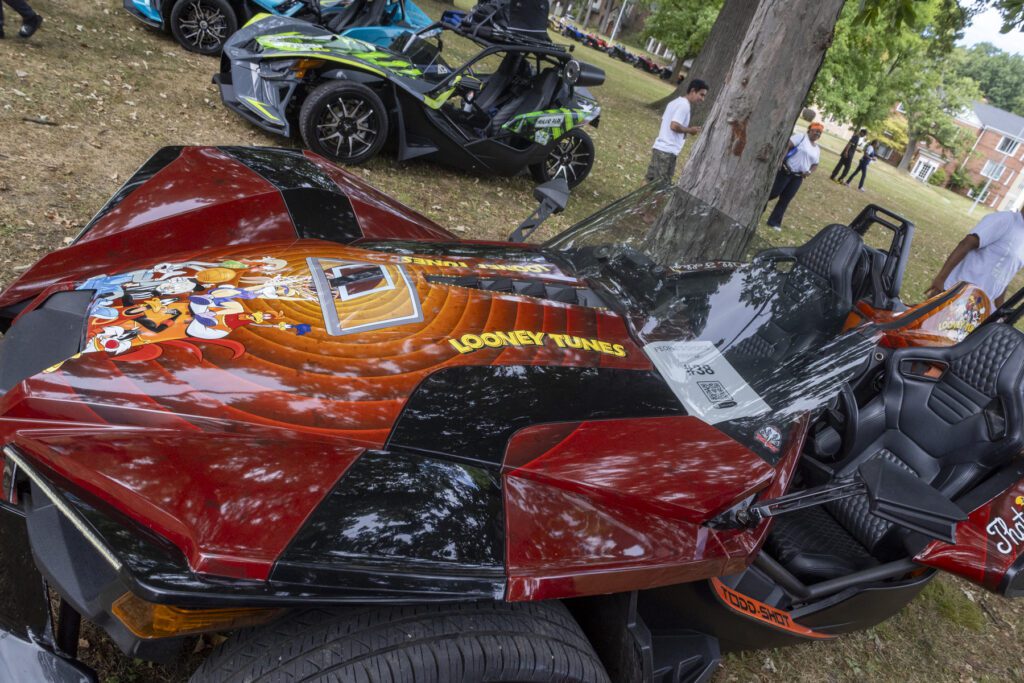Owens offers CDL course
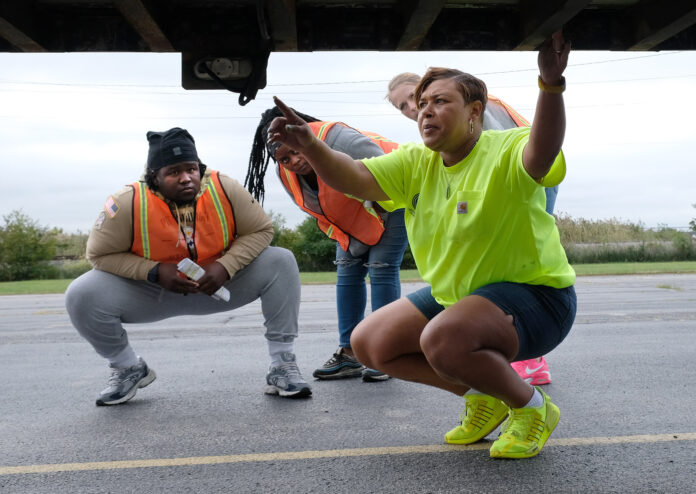

Woman instructor steers students on path to driving
UPDATE (Nov. 13): The Owens CDL Training Program has received $149,100 from the Commercial Truck Driver Student Aid Program for 2025.
The financial aid program is funded through the Ohio Department of Higher Education (ODHE). It provides financial aid to in-state students who complete a CDL program and agree to reside and be employed in Ohio for a minimum of one year upon completion.
The financial aid program is funded through the Ohio Department of Higher Education (ODHE). It provides financial aid to in-state students who complete a CDL program and agree to reside and be employed in Ohio for a minimum of one year upon completion.
PERRYSBURG – The CDL program at Owens Community College has a saying: “We don’t run away from our problems; we steer toward them.”
That’s true both when trying to master a maneuver, like straight-line backing, or as CDL instructor Linda Lear has proven, in life.
Lear came to Owens as a CDL student 2019, looking to start a new, better life. As Lear said, her back was against the wall because of personal problems. She knew she had to do something.
“I always liked to travel and drive, so I decided to go to Owens,” Lear said. “There were always barriers trying to hold me back or stop me from obtaining my CDL. Once I had shut the door and put everything behind me and just focused on one thing, I obtained my license.”
Owens helped Lear break through those barriers. She gave special credit to Owens CDL instructor and training manager Harley Curavo.
“My teacher, Harley, spent that extra one-on-one time with me that I needed,” Lear said. “I couldn’t do anything. Him taking that extra time gave me the push to obtain my license.”
She spent the next two years on the road as a driver. At first, she thought she would be the only female in the trucking industry. However, it didn’t take long for her to see that she was wrong – there are many women who work in the trucking industry. According to data from the U.S. Bureau of Labor Statistics, the number of female truck drivers has doubled in the past 20 years. Females now comprise 8 percent of the truck driving population.
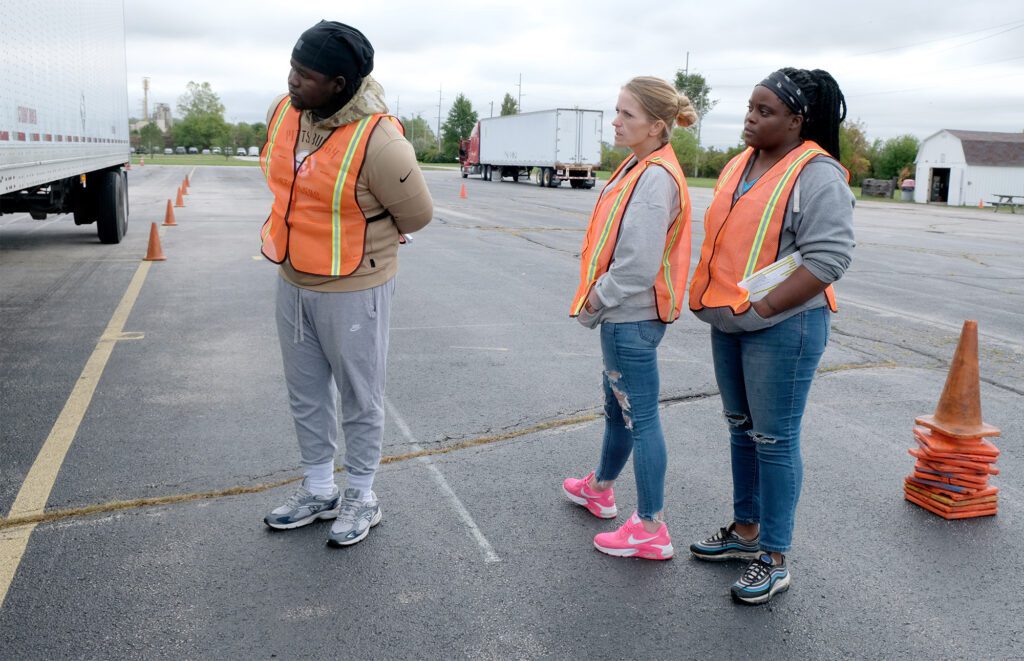
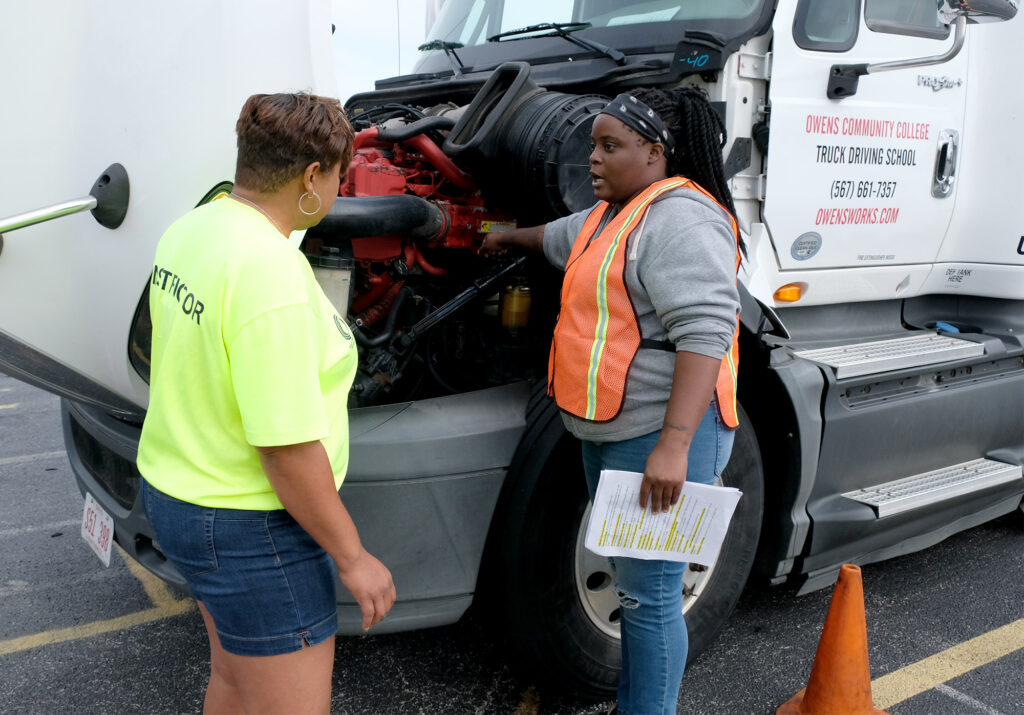

A chance encounter with Curavo and his encouragement for Lear to become an instructor led to the next chapter in her life.
Lear has now spent two years as an instructor at Owens. Helping students overcome their challenges and barriers motivates her as an instructor.
One of her students is Toledoan Kejuan Jones, who said that entering the program “is a good experience that set me up for the future.
“It’s different, but it’s fun to learn new things, especially about the trucks. I want to experience everything – regional, local, over the road- to have that experience so I can determine what I want to do further down … the road,” he said.
“I was in their shoes … I was struggling with some things,” Lear said. “I show them things I was struggling with and what helped me to overcome it. Once I show them different things, students are able to grasp the concept. That’s what makes me feel good, when the students are able to understand.”
Lear said her biggest responsibility is safety, both for the student and the other motorists on the road.
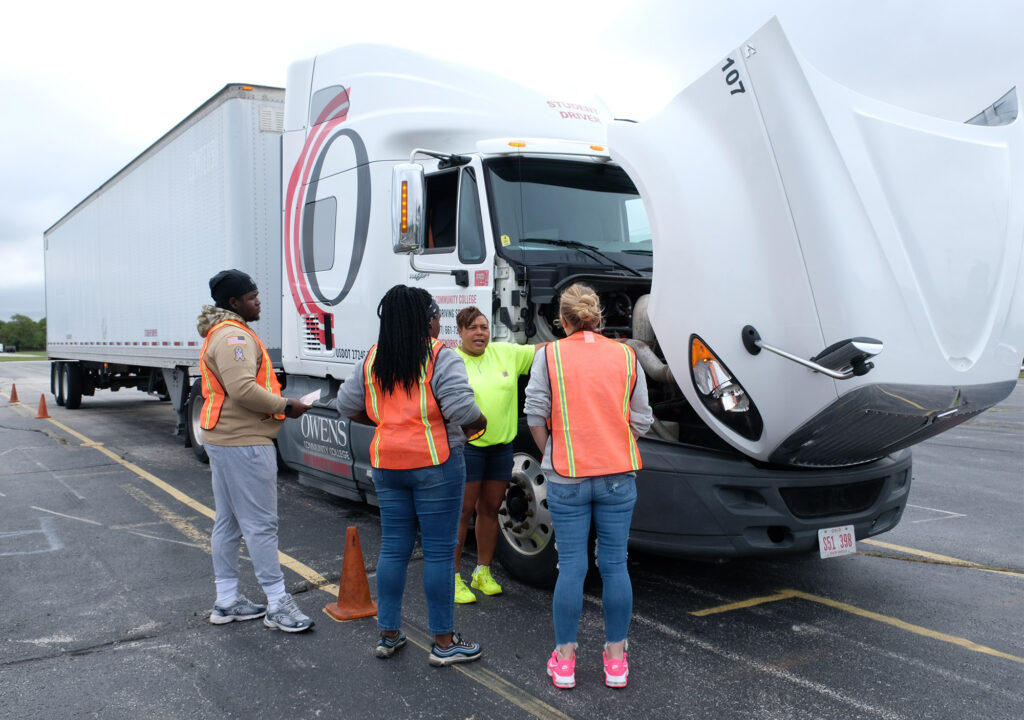

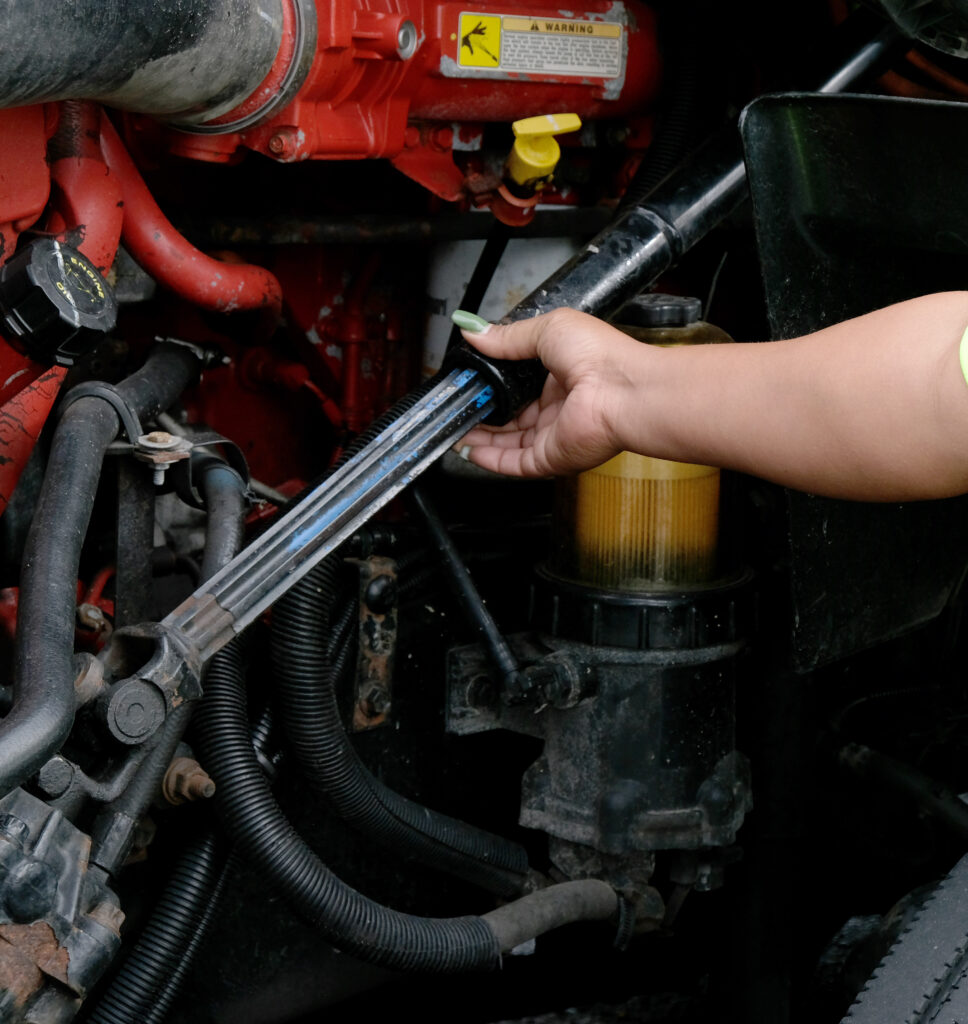

She doesn’t have to do it alone, though. The friendly, family atmosphere at Owens and supporting each other as people is what sets the CDL program apart from others in the area.
“Every one of those other programs works as a team, but we’re not just a team here at Owens, we’re more like a family,” Lear said. “We help lift one another; we help inspire. You never know what someone is going through.”
Job security and the overall atmosphere are what Lear uses to sell potential students on the idea of obtaining their CDL at Owens and entering the trucking industry.
“We’re essential. Everything in the world has to touch a truck. I don’t care if it comes on a boat or plane, everything has to touch a truck,” she said.
“You’re always going to have a job. There’s always stability.”
To learn more about the CDL program at Owens, visit Workforce
For more information on the Workforce and Community Services programs at Owens, please visit Workforce/Community
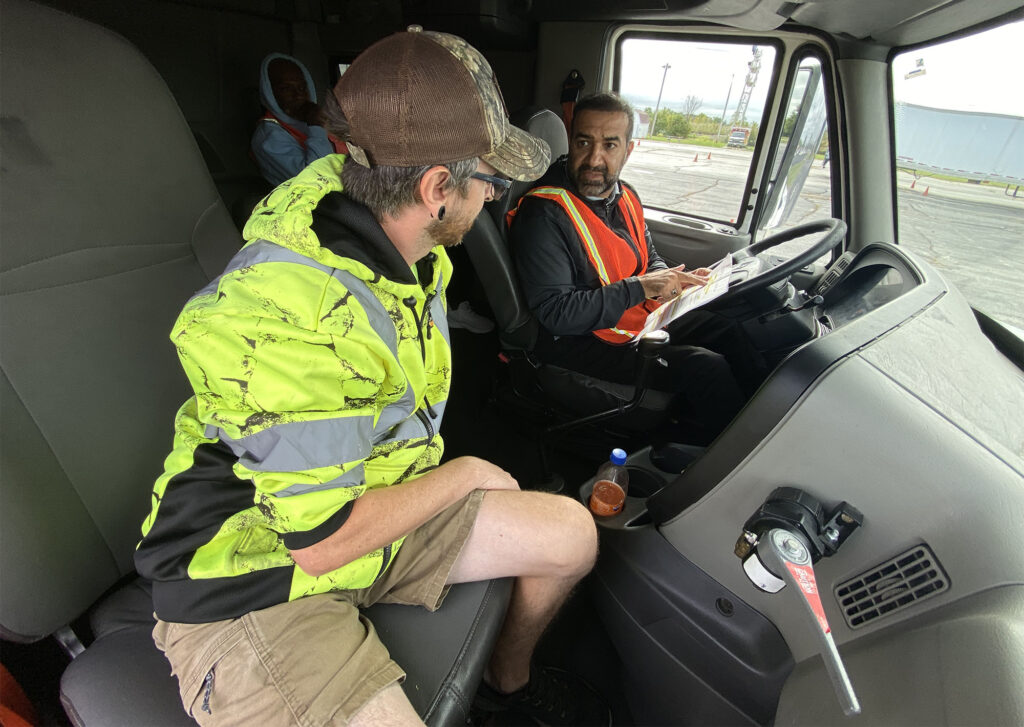

BrightView open house
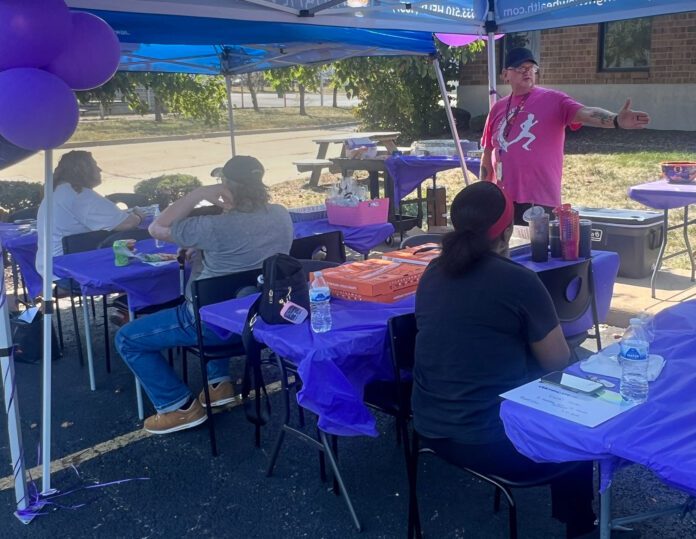

BrightView Health celebrates recovery during National Recovery Month
MAUMEE – In honor of National Recovery Month, BrightView Health Addiction Treatment Center hosted an open house on Oct. 18. The community was invited to learn more about their outpatient addiction services.
The event was a time to celebrate recovery, raise awareness about substance abuse disorder (SUD), and offer support, said Chelsae King, BrightView’s Community Outreach manager, who talked about the significance of the gathering.
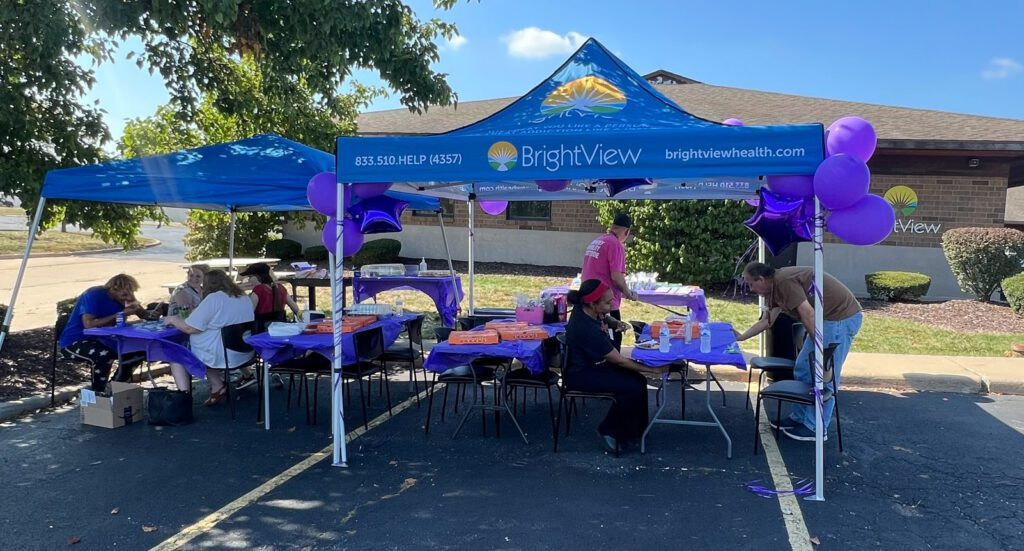

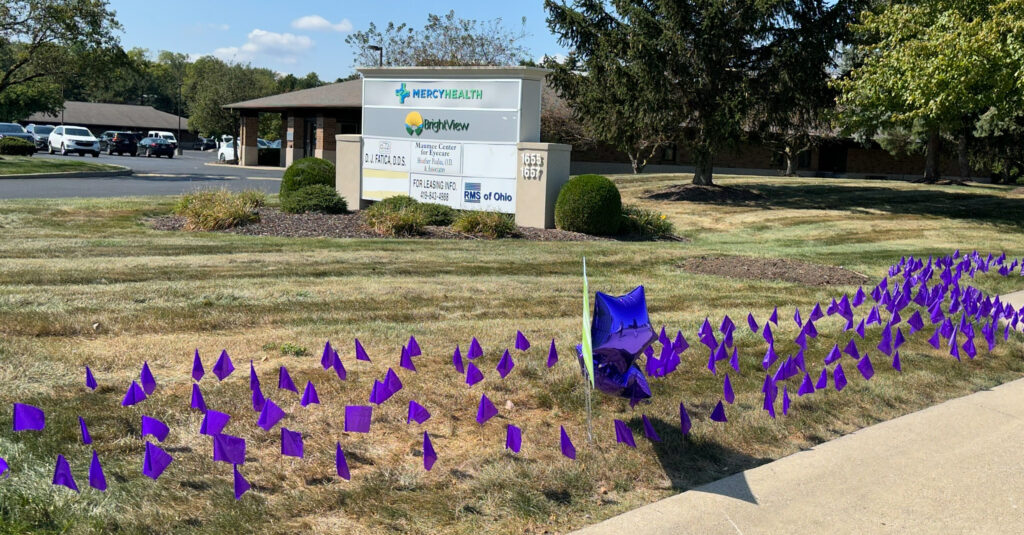

“My biggest takeaway was having the ability to celebrate people’s recovery. It’s often something overlooked and it was nice to pause and honor those individuals,” she said.
At the heart of the event was the Champions of Recovery Award, which recognized six individuals at various stages of their recovery. “We had people celebrating several years of sobriety, down to a couple of weeks,” King explained. “Each moment in recovery is worth celebrating.”
BrightView’s approach to addiction treatment includes a combination of medication-assisted treatment (MAT), counseling and peer support, with the goal of helping patients stay engaged in their recovery process.
In addition to celebrating success stories, the open house featured community partners, including the Northwest Ohio Syringe Services (NOSS), offering health testing and Narcan.
King emphasized the importance of creating a supportive environment for patients, noting that many expressed gratitude for being included in a sober, caring space.
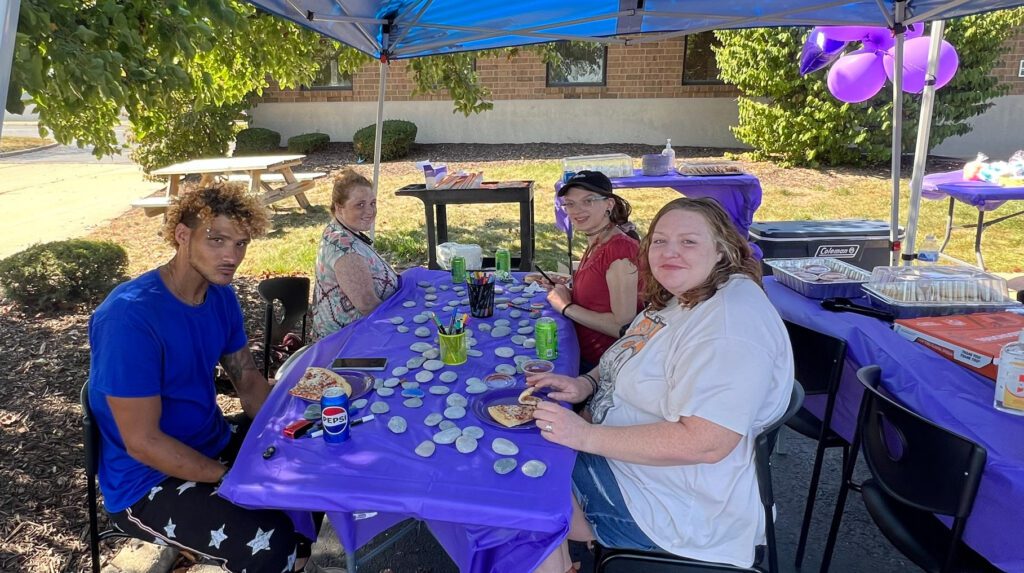

For those looking to support others in recovery, King advised to “be aware, and don’t hesitate to reach out if you think someone is struggling.”
BrightView, founded in 2015, continues to accept new patients daily and provides same-day appointments, ensuring that help is always available. BrightView services are easy to access and available to hundreds of area residents.
The center accepts walk-ins until 3 p.m. weekdays and offers same day appointments. People or families seeking help can call BrightView at 833-510-HELP (4357) 24-hours a day, seven days a week, or schedule an appointment online at brightviewhealth.com.
For patients in withdrawal, it takes less than four hours from the time they walk through the door to receive stabilizing medication, complete their first counseling session and begin lasting recovery.
Increase your return rate
Three steps to making your safe investments work harder
Interest rates are the highest they’ve been since my children were born. After bottoming out, rates started increasing rapidly in March 2022. While the Federal Reserve lowered interest rates by half a percentage point this month, that might be good news for those with debt, but it could spell trouble for savers. The good news is that there is still time to lock in higher rates.
According to the Federal Deposit Insurance Corporation (FDIC), as of Aug. 19, 2024, the national average rate on savings accounts is 0.46 percent, and for interest-bearing checking accounts, it’s 0.08 percent. While I believe it’s smart to keep enough money in your local bank or credit union to cover short-term needs and expenses, there’s a cost to liquidity. Here are three steps you can take to increase your returns:
Step 1: Talk to your local bank or credit union
Ask about options or promotions they offer to increase the rate on your savings. For instance, our local bank offered my family a money market rate that was double the national savings rate. If you don’t need some of that money for three to 12 months or longer, you could move those funds into an FDIC-insured CD, where national average rates range from 1.53 percent to 1.85 percent, but searching around could get rates into the 4 percent to 5 percent range.
The benefit of moving a portion of your money into a high-interest money market account or short-term FDIC-insured CD is that you can enjoy immediate higher rates. This can provide a nice boost to your income, especially in times of inflation. However, the downside is that rates are expected to decrease and can change quickly. Historical events like COVID-19, the 2008 Financial Crisis or 9/11 show that rates can drop suddenly.
Step 2: Shop around for higher rates
Explore websites like Bankrate.com and Nerdwallet.com, which make it easy to compare bank rates. Banks compete for depositors, and a competitive offer from another institution could earn you two to three times more. Keep in mind that these online rate websites often receive compensation for the placement of sponsored products, so do your research.
You can also talk to a licensed financial professional. An independent professional who holds both securities and insurance licenses can help you compare money market rates, bank CDs and fixed-rate annuities from leading American insurance companies.
Working with an individual may be more convenient than navigating the internet on your own. Just be sure to ask how the financial professional is compensated and fully understand the terms of any product you’re considering.
Step 3: Consider a laddered approach
Building a laddered investment strategy can be a smart way to manage your safe investments. Keep enough money in checking, savings and money market accounts to cover three to six months of expenses, and then invest a portion in higher fixed-rate accounts that mature in six months, 12 months and so on.
For retirees or savers with larger balances who want to lock in higher rates, a fixed annuity could be a good option, allowing you to lock in rates for 5 to 10 years. This strategy can protect your interest earnings for the duration of the selected term, which is especially helpful in a declining interest rate environment.
Act now while rates are high
Lower interest rates are widely expected in the future, yet many savers haven’t taken advantage of the decade-high rates available in most savings vehicles. Now is the ideal time to take steps to increase your returns and lock in rates for the long term. A pay raise for savers is just three steps away.
For more information about America’s Retirement Headquarters, tune in every Saturday at 12 PM on 1370 WSPD or visit www.arhq.com. Investment Advisory Services offered through The Retirement Guys Formula, LLC. Securities are offered through PEAK Brokerage Services LLC., Member FINRA / SIPC. America’s Retirement Headquarters and Retirement Guys Formula is not an affiliate of PEAK Brokerage Services LLC. The office is at 1700 Woodlands Drive, Suite 100, Maumee, OH 43537. 419-842-0550
The buckeye nut
Buckeye nuts are abundant, toxic and maybe bring luck to humans
It’s time for the buckeyes!
Not the football team. Real buckeyes. That shiny, dark brown, nut-like seed that is said to resemble the eye of a whitetail deer. Even though it’s like a nut, it’s not edible. In fact, buckeyes are toxic to humans, but they sure are cool looking.
This is the time of year that buckeyes, which have been maturing unseen inside heavy spiny husks, drop to the ground from the buckeye trees. They split when they hit the ground and scatter the seeds, which can litter the ground beneath the tree.
Though they’re not edible, folklore maintains that they bring luck. It’s not unusual to see a crowded string of buckeyes fashioned into a necklace. It’s not uncommon for people to carry them in pockets and purses in hopes of bringing luck, or maybe just because they like the way they look.
Buckeyes jumped into the national spotlight when William Henry Harrison, a native Virginian who had relocated to Ohio, used the buckeye tree and seed as a symbol during his successful campaign for the presidency in 1840.
Buckeyes are widespread in western Ohio, often in areas along the Maumee River.
Though the real thing isn’t edible, there’s always that very popular alternative. Candy buckeyes — peanut butter fudge dipped in milk chocolate — taste great and look like the real thing.
Go buckeyes!
State of the Science
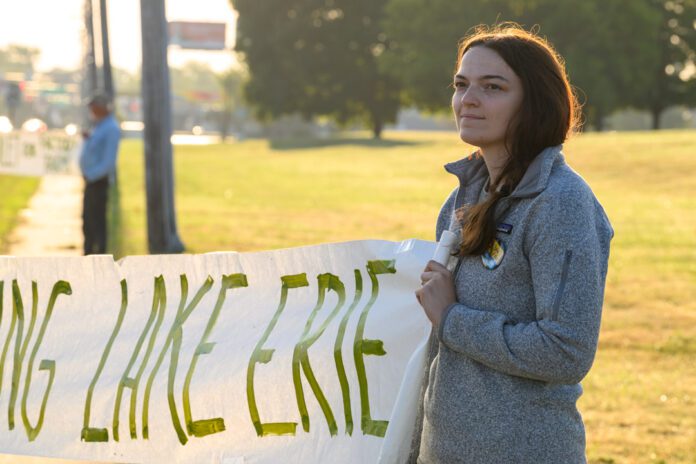

Relationship status between farmers and water quality: It’s complicated
Story by Jasmine Cupp | Photos by Christy Frank
TOLEDO – During the recent Understanding Algal Blooms: State of the Science Conference on Sept. 4, state and federal agencies, academic researchers and the agricultural community came together to discuss the latest science and technology regarding Lake Erie algal blooms.
The conference, held at the Stranahan Theatre, also drew protesters who don’t think enough is being done to tackle algal blooms and water quality.
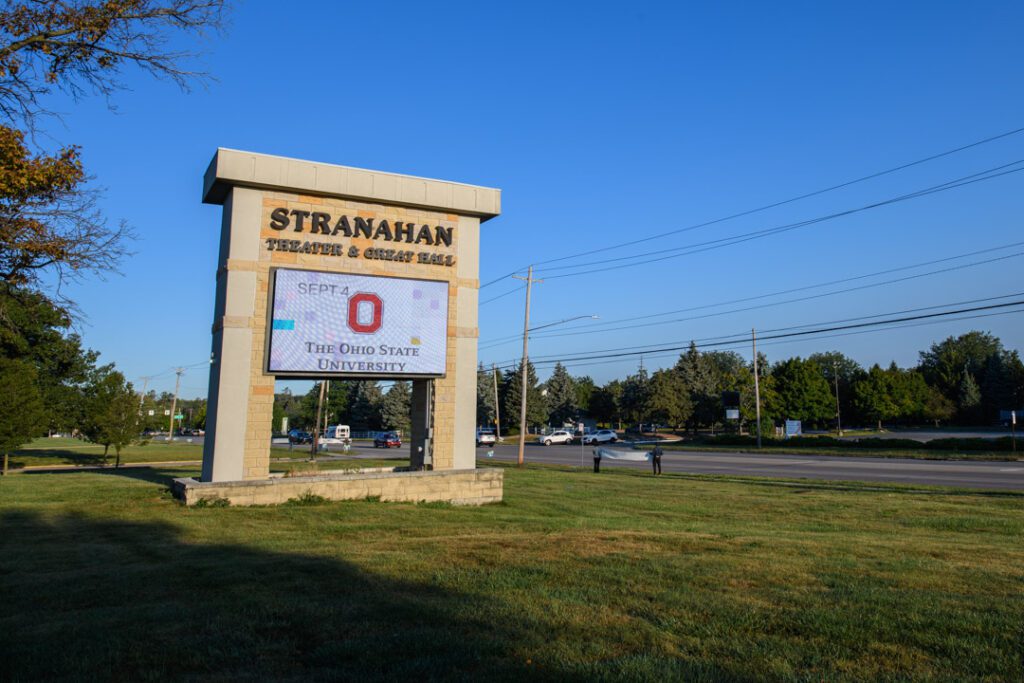

Taxpayers have had to commit to fund programs and agencies to help research and implement solutions to our local water quality issues related to Lake Erie. Area farmers, however, are allowed to take a voluntary role in participating in a solution.
The generational occupation of farming has been thrown into a situationship with government entities since the Lake Erie water crisis 10 years ago, and the status is complicated.
Chris Winslow, director of Ohio Sea Grant & Stone Laboratory of The Ohio State University and moderator of the event, drew specific criticism from protestors representing the Lake Erie Advocates.
“Dr. Winslow, a perfect example of a public employee, paid to represent the public interest, who does a fine job running interference for CAFO (Concentrated Animal Feeding Operation) operators and the Farm Bureau,” a Lake Erie Advocates newsletter stated, which also aimed to recruit members to protest outside of the conference.
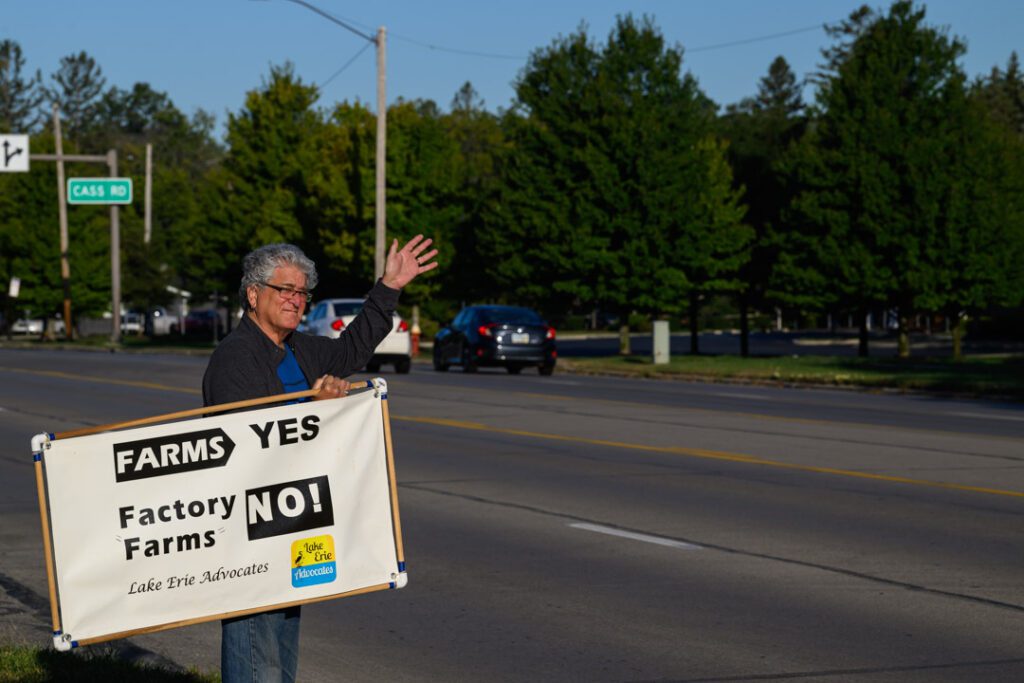

“Chris has been studying this for decades,” Lake Erie Advocates representative Mike Ferner said. “By now, there should be no excuse for anybody that is publicly funded to do research to be talking about ‘Well, gee, we don’t quite know what the problem is’.”
Ferner noted that CAFOs and factory farms didn’t exist before the mid-90s.
“Nobody waited in line at Kroger for the next shipment of milk or eggs or pork chops. We don’t need them (factory farms). This is a business model that has been hoisted upon farmers and the rest of us because a few people figured out how they can make a lot of money,” said Ferner.
“If you look at the land grant colleges, like OSU and MSU, that’s where the tax dollars go to develop ‘progress’ in agriculture and we get this kind of bulls**t and it’s ridiculous,” he complained.
Inside the conference, there was a different perspective on agricultural education and a different dialogue happening.
Winslow hosted a discussion panel entitled Success and Barriers to Farmer Adoption of Conservation Practices. One of the questions submitted by the audience asked if there had been a shift in farmers’ attitudes toward adopting conservation practices. Panelists had intriguing answers.
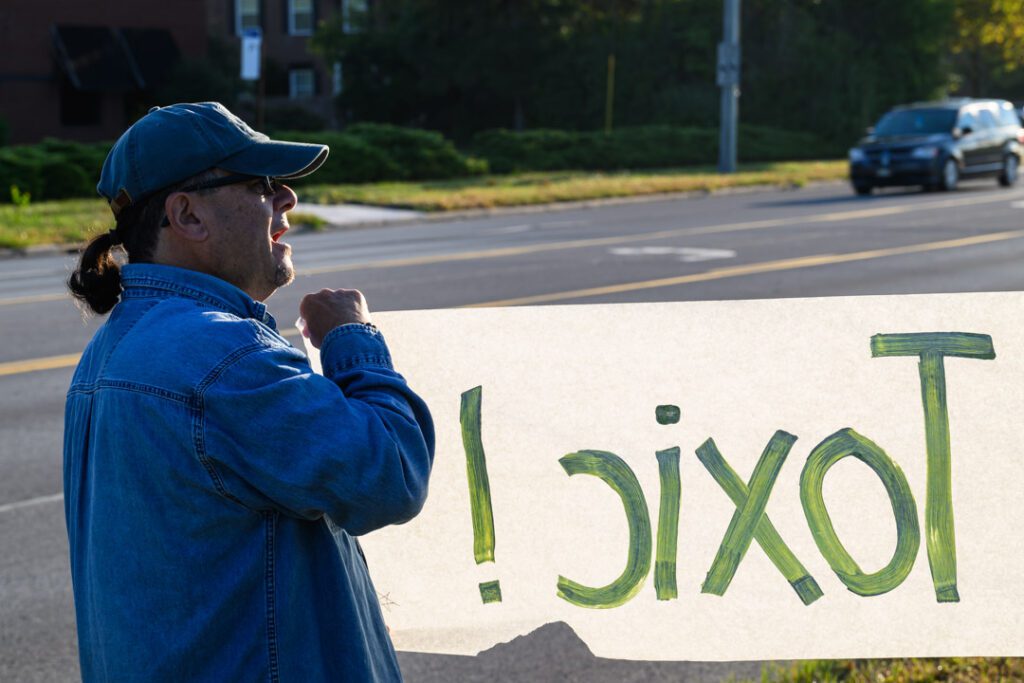

Chris Heck, Soil & Plant Nutrition Agronomist of Nutrient Ag Solutions, answered, “When I look at how my family was farming back in the 1990s, there was just a conversation about no till (farming). As I went to college at Michigan State University and I started working for crop reduction services, that was the first time I ever heard about cover crops. When I first started at Michigan State to now and into 2025, there have been huge changes by farmers in adoption of these practices.
“I think a lot of it has to do with a generational shift,” Heck continued. “It’s not the mindset of ‘This is what we’ve always done so this is how we’re going to do it.’ We have this next generation that’s coming in for the last 10 or 20 years that have been asking why. Why am I doing this and what can I do to be better? That’s been very impressive, and I just continue to see this growth of people wanting to treat the land better and get more out of their investment.”
“I’m going to be a little antagonistic here,” said Doug Deardorff, Pilot Watershed Project coordinator of Hardin County Soil & Water Conservation District.
“I don’t think the attitude has shifted; I think stewardship has always been there. When I sit in shops and talk to the 50-or70-year-old demographic, that ethic is still there and it’s still there even with the next generation. They understand that ‘I have to take care of the land because it takes care of me.’”
After a lively round of conversation involving agricultural education, information transfer, and ethics, a topic that stays active among scientists, farmers and protesters alike, manure was introduced by the audience.
This question was posed: “What’s the next best step in manure management technology and what should funders be looking at to scale nutrient manure reuse?”
“After many years of looking at a whole host of different technologies and doing pilot projects, it all comes down to money,” said Theresa Dirksen, the Agriculture & Natural Resources director of Mercer County, Ohio.
Dirksen, when introducing herself to the panel, noted that she had years of experience trying to find solutions to manure problems.
“I haven’t found one (solution) yet that’s scalable down to a smaller operation. If you’re not milking 4000 cows, I just don’t know what’s out there and available that’s going to be economic. I honestly don’t,” Dirksen said.
“We’ve got a really good model with the poultry manure, where most of the poultry manure that’s produced in Mercer County is transported 300 miles away,” she explained. “It’s easily trekked and is high in nutrients. But when you have a liquid swine manure, a liquid dairy manure or liquid cattle manure, you just can’t do that. Water is heavy and water is expensive to move.
“It’s disappointing, but maybe we’ll still get there. Sorry if I sound down in the dumps, but I’ve been beaten down for the last eight years trying to do it,” Dirksen added.
Good intentions and hard work are there, but solutions, when involving people, money, permitting, live animals and livelihoods, are glacial.
The last topic discussed has raised questions among City of Toledo and Lucas County officials. Gregory Howard, associate professor of economics at East Carolina University, spoke about voluntary and involuntary policy and economics.
“There are some places in agriculture, like around Grand Saint Mary’s, where they have these nutrient management plans that every farmer is required to do. In a lot of places, that’s not really how agri-environmental policy goes, in my understanding,” explained Howard.
“It’s much more voluntary in conservation programs. And when you can’t force people to do these things and it has to be voluntary, it’s really important to include social science elements to understand what drives and motivates people,” he said. “It’s not just about the money, it’s about making these things (programs and policies) more appealing to people.”


Although there is a lot of time, money and expertise being aimed at solving water quality issues, it does seem that every day without a solid solution is a day too late.
According to the Ohio Environmental Protection Agency, there are 150 large CAFOs in Ohio. An Ohio Environmental Council study shows 64 of the concentrated animal feeding facilities are located in the western Lake Erie watershed. Twenty-four percent of all the solid manure and 42 percent of the liquid manure in Ohio are produced inside the boundaries of the western Lake Erie watershed.
Celebrating Latino heritage
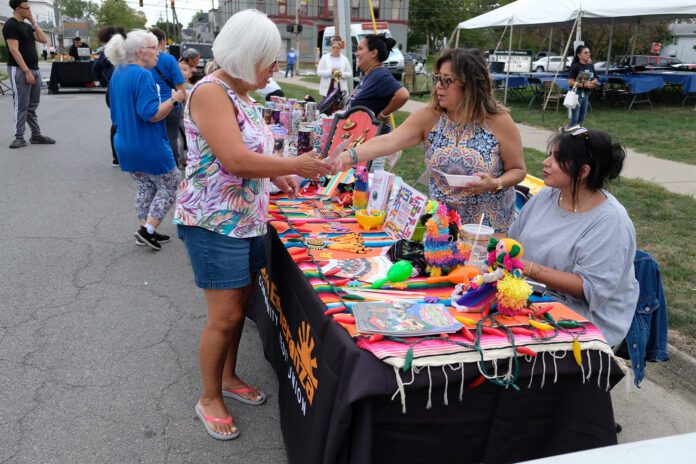

Escuela Smart Academy hosts Latino Heritage Month fest
TOLEDO – Escuela Smart Academy, the only bilingual school within Toledo Public Schools, hosted one of its biggest family events Friday with the Fiesta Con Escuela, a celebration of Latino Heritage Month.
The event was intended to have the atmosphere of an outdoor street festival, though the weather didn’t cooperate for much of it.
Families were just arriving Friday evening under overcast skies when sprinkles of rain began. The timing of the rain resulted in dismay among the organizers, given the stretch of dry weather leading up to the festival.
“Not even a little bit of rain was in the forecast!” said Natasha Allen, principal at Escuela Smart Academy, as she huddled under shelter with staff members to make contingency plans. Amid the steady downpour, volunteers scrambled to consider what they could move into the school gym, vendors placed tarps on their tables or packed up displays, and families took shelter under an open tent or trees.
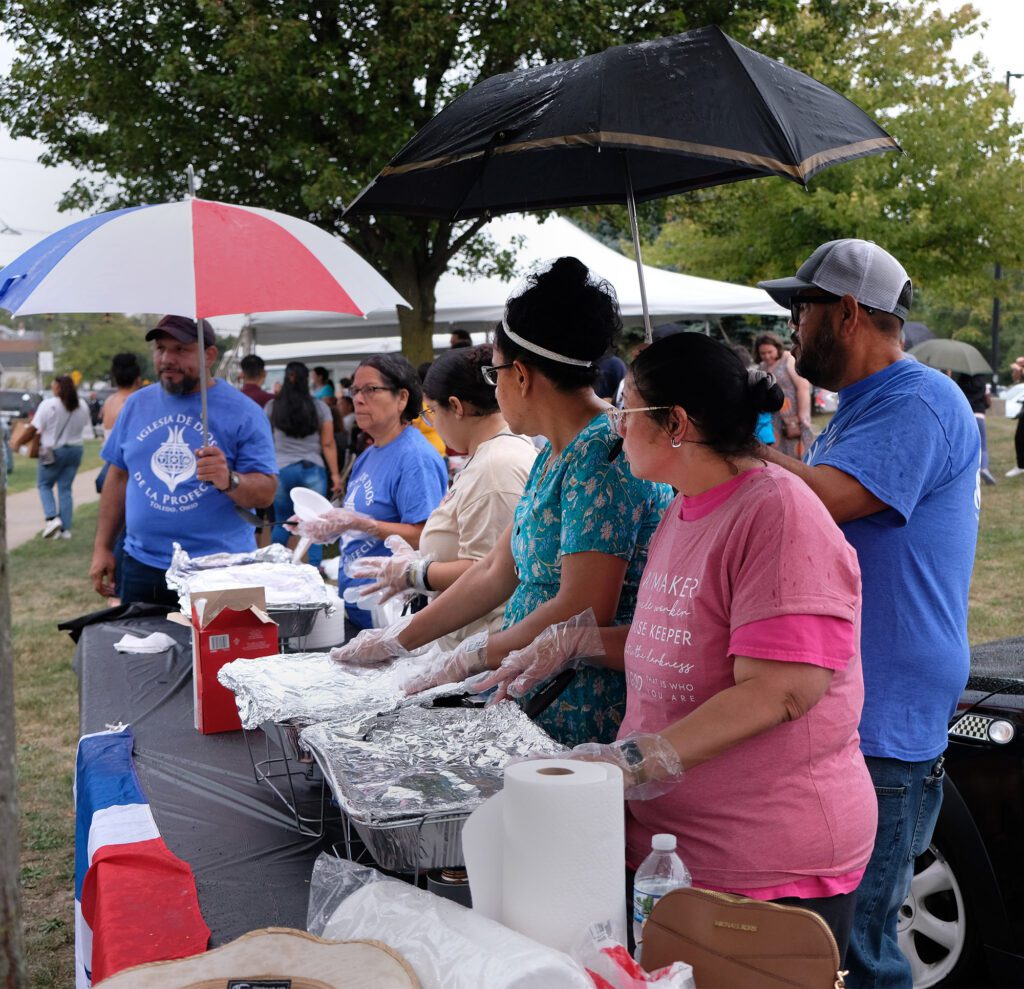

But for a half hour before the festival technically started, there was already a buzz of activity in the school’s front yard and along Field Ave.
The academy, on Western Ave. in Toledo’s Old South End, provides student instruction in both Spanish and English, with a bilingual staff among its roster. The academy became part of Toledo Public Schools in 2019; previously, the program operated as a charter school.
With its status as a district magnet school, TPS families apply for admission. Close to 300 students are enrolled this year in grades pre-K to 6, and there are waiting lists in some grades.
Escuela’s location is in a neighborhood that is home to many Spanish-speaking families. According to 2020 Census data, there are about 24,000 Hispanic/Latino people living within the city of Toledo.
“The neighborhood and the community, we’re family,” Allen said.
“We are embracing diversity – embracing the Latino culture and providing another opportunity for our students,” said Linda Ruiz-Bringman, assistant superintendent of Student, Family and Community Engagement for Toledo.
In addition, Spanish is the second most spoken language at home after English among Toledo’s families, the U.S. Census Bureau reports.
Crystal Mosqueda, who teaches Spanish to Escuela students in grades pre-K through 2, said language skills among her students vary quite a bit. Some know little to no Spanish, some know little to know English, “and everything in between.”
But the curriculum is meant to support skills in both languages, even if the students don’t yet know “how fortunate they are” to have bilingual experience.
The festival has been an annual tradition since the school opened under TPS, and is scheduled in conjunction with Latino Heritage Month, also known as Hispanic Heritage Month, observed from Sept. 15 through Oct. 15.
As the evening began, food trucks, vendor and agency information tables, a face painting table, a cake walk game, a DJ booth, dancing and a bounce house were lined up on Field Ave. in front of the school.
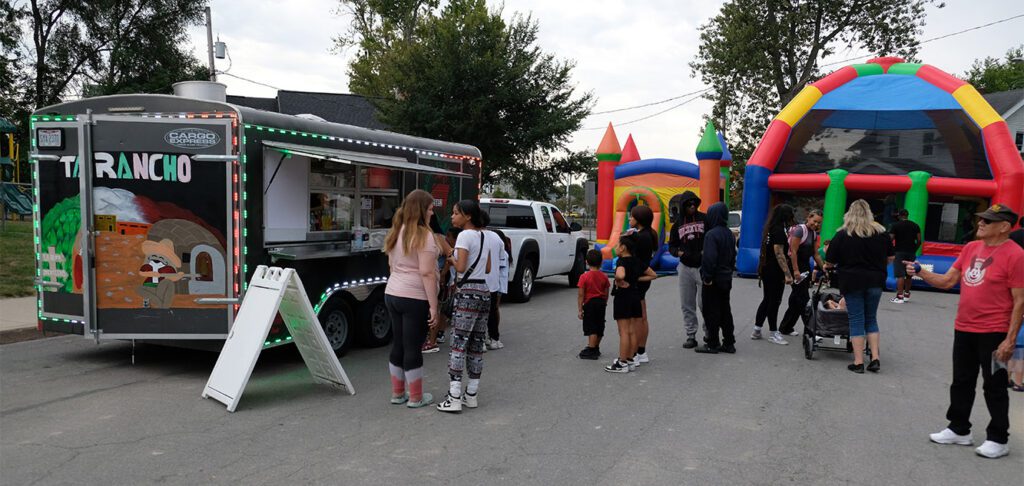

Members of the University of Toledo chapter of Alpha Psi Lambda, a national co-ed Latino interest fraternity, were among the volunteers setting up the cake walk game. Those students included Nya Quimbaya, who is studying social work at UT, and Erica Sacoto, studying criminal justice.
“I’m from Lorain, Ohio. We had festivals like this,” Quimbaya said as they looked over the activities setting up along the street.
Cassie Tenorio, community development manager at Girl Scouts of Western Ohio, hosted an information table on behalf of the Girl Scout council. She said there was previously a Girl Scout troop for younger girls at Escuela, and the activities included cultural celebrations, such as Dia de los Muertos. But the troop leader has since moved out of the area and Tenorio hopes to restart it.
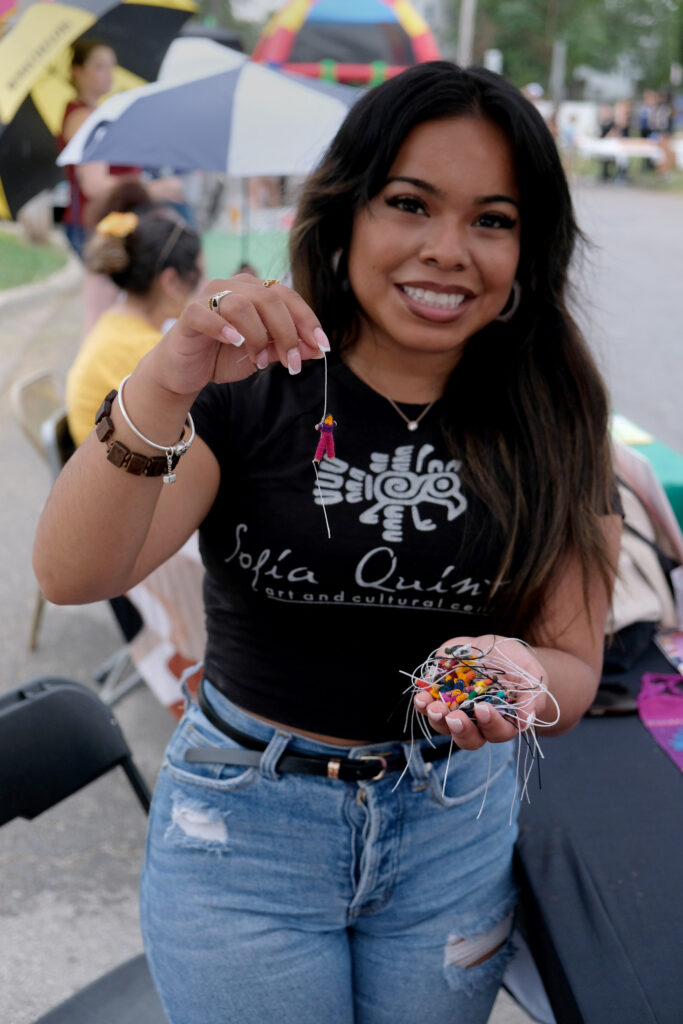

Another information table showcased resources and activities provided at the Sofia Quintero Art & Cultural Center, which is in the neighborhood at 1222 Broadway St.
Mylicia Rangel, who is a mental health prevention support staff member at the cultural center, said the non-profit organization celebrates Latino culture through its art exhibitions, cooking classes, community garden space and related programs.
And Henry Garcia, a licensed Marketplace / Medicaid navigator with Toledo/Lucas County CareNet, made the rounds to introduce himself to those attending the festival and start conversations about low-cost health care coverage options.
He used to be a tutor at Escuela and is bilingual, so he is able to assist Spanish-speaking families from the neighborhood who may have questions about those programs.
Local officials invited to attend included Toledo Mayor Wade Kapszukiewicz and Toledo Public Schools Superintendent Dr. Romules Durant.
Meet the Slang Gang
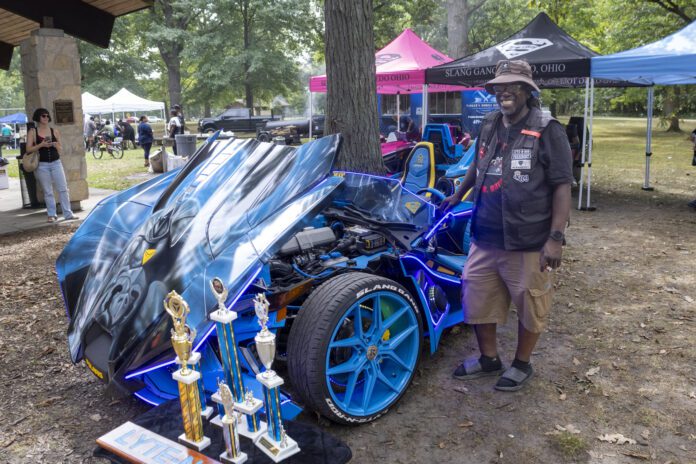

Toledo’s thriving Slingshot culture cruises the streets
Story by Erin Holden | Photos by Kyle Brown
TOLEDO – When 28-year-old Sylvania native James Bassett saw his first Polaris Slingshot in Cleveland, he knew he had to have one.
“It feels like you’re driving a go-kart,” he said, recalling his first test drive of a Slingshot. “I’m not a huge car person, but driving it was so unique and fun.” Soon after, he found a great deal online for one in Arkansas and had it shipped to him here in Toledo.
A medical student at UTMC who is about to relocate after obtaining a residency out of state, Bassett is looking to sell his because of the inconvenience of taking it with him on the cross country move. Otherwise, he’d keep it. He’s even willing to rent it out during the summers here, which wouldn’t be surprising. It seems like the demand is there.




Summers in Toledo come alive when these autocycles cruise the streets, with their elaborate sound systems, colorful lights and personalized designs. They are a wonder to behold when you take a closer look, and that’s exactly what the Toledo Free Press decided to do – find a gathering of Slingshot riders and see what this love affair is all about.
Enter the Slang Gang
You’re likely to see Slingshot gatherings outside the Mud Hens stadium some Friday and Saturday nights, but we were lucky to discover the Slang Gang’s 2nd annual “Meet the Gang” Weekend at Ottawa Park during Labor Day weekend. We arrived to find Slingshots lining up next to a pavilion. R&B music flooded from the speakers and the smell of grilled meats wafted through the air.
This family-friendly event was headed up by the founder of the Slang Gang, Roderick “Lyte-N-Rod” King. “We started this [group] out of my garage in 2017,” Roderick said. “Now we’re in five states.”
He notes that he was inspired by his “love of these machines. I rode motorcyclists as a kid. I got old, and this is a more age-appropriate vehicle,” he said.
“Back in 2018, we drove from Detroit to Miami and back, and we videotaped ourselves, then got in touch with Polaris,” he continued. “They sponsored the ride. They paid for the gas. We started with the Slang Gang group, and it just grew like crazy. So they’re here from Detroit, Cincinnati, Chicago … some from Memphis. They’re from all over the country.”
Tijuana “Road Runner” Burton
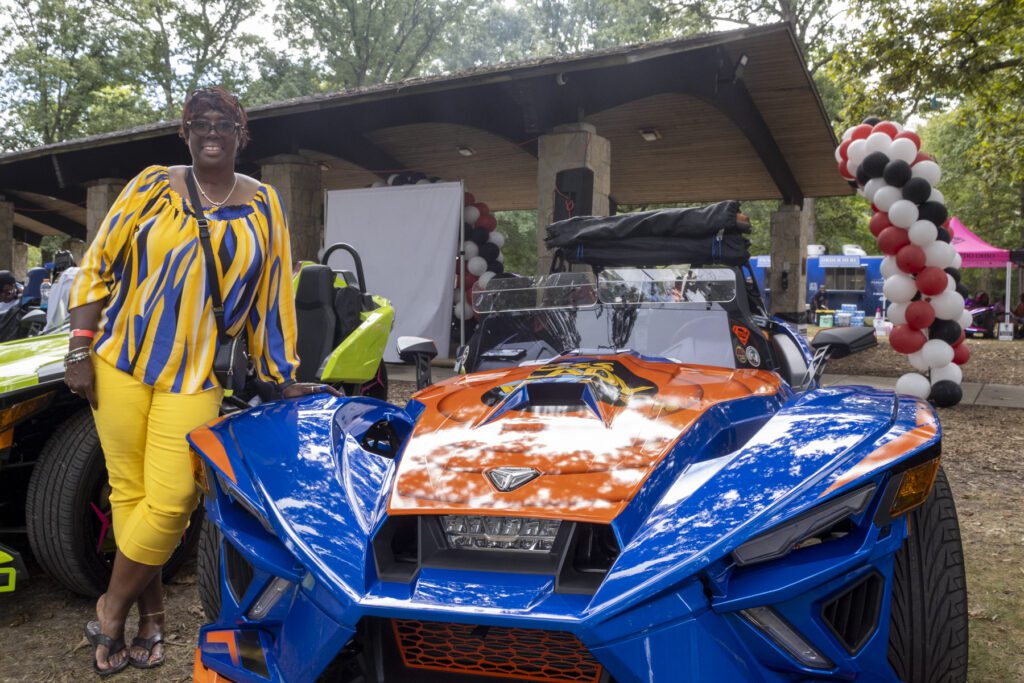

Tijuana Burton, based in Saginaw but rides with a Detroit crew for events like the Slang Gang weekend, has been a Slingshot rider for three years now. A member of the Slingshot Sisters, a global community of female slingshot riders, Burton has customized her Looney-Tunes-Roadrunner-themed vehicle with fender pods, graphics, music subs, lights and a custom top. After a fender bender earlier this year, she’s been steadily rebuilding her ride.
“I’ve driven as far as Houston and DC. Shout out to the Slingshot Sisters from San Antonio!” she exclaimed. “That’s where it originated. But we’re all around the world.”
She noted that the prime riding time is probably April through Halloween, but she knows of at least one Christmas-themed Slingshot that can be seen well into the colder months, a true commitment to its personae.
Corey “Paradise” King
The Slang Gang Facebook page describes the group as being for “grown folks,” and Corey King, the Detroit chapter’s president, echoes this sentiment.
“There are a lot of people who may not want to cooperate, who may not want to follow the rules, and we’re not even talking about anything major,” King said. “But it is definitely a responsible, grown and mature group, and that’s what we try to keep on display.”
He adds that the group in Detroit also focuses on charity work, helping kids and the elderly.
Corey’s Slingshot has regal and spiritual themes. “I just always want people to realize that everything that’s done in the dark comes to the light, and you can do nothing without God being aware. My dad raised me to have the mindset of a king. Carry yourself like a king. So the image was a no-brainer.”
If you’re a Slingshot owner who wants to get involved with the Slang Gang’s Toledo chapter, check out their Facebook group for planned meetups. It has 1.5k followers and counting.
